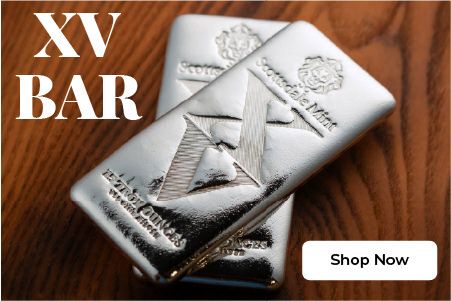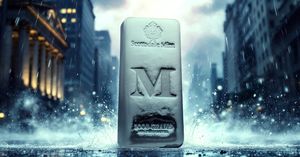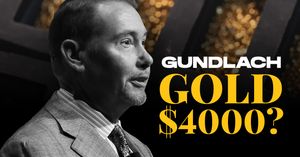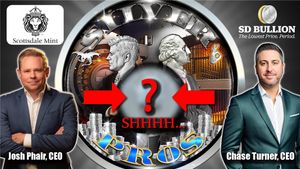This guest contribution is provided by Miguel Perez, President of the The Wyoming Reserve.
Powell’s Controversial Bitcoin Statement
Recently, the Federal Reserve chairman Jerome Powell made news when he alluded that Bitcoin (BTC) is not in competition with the US Dollar but is in competition with gold. The exact quote is “It’s just like gold only it’s virtual,” Powell said. “People are not using it as a form of payment, or as a store of value. It’s highly volatile. It’s not a competitor for the dollar, it’s really a competitor for gold.”
The way he described BTC essentially is as if it is a commodity. A typical commodity price is easily described as a physical asset, depending on its use case, which may have substantial price volatility because of supply and demand factors compounded by speculator interest. However, typically any item that has price volatility suffers from low market adoption, lack of a consistent demand or lack of market transparency.
The Evolution of Bitcoin’s Volatility
The price volatility for BTC still stems from it being a first of a kind. It is not something that generations of mankind have grown to know, understand, and work with. It is a digital asset of which its true use case is the creation of a currency, which is a means of exchange. Since BTC has yet to establish itself as a means of exchange in regular commercial transactions, as Powell noted, then it has yet to reach its full adoption for its purpose.
The fact that BTC has not reached the point of maturation, which means it becomes a common form of exchange among people, does not mean that it will not get there. There will be a point in the future, if the goal of Satoshi Nakamoto is accomplished, where the volatility will be greatly diminished by its increased global adoption and use. This does not mean that its value against a currency, gold or other goods and assets will not fluctuate. The value always will but it will mean there will be less opportunity for the new adopters to participate in its initial growth and that no government can manipulate the value of this form of exchange since the production is limited to twenty-one million coins.
Why Powell’s Assessment Falls Short
However, because we are working with a digital asset, it is easily divisible and can split multiples of times to support demand for the form of exchange. This is what makes it an exciting and viable currency option. This is what puts it in competition with all currencies of the world. Finally, this is why Powell’s comment is actually… false. The statement was made to obfuscate the truth of the matter or from a lack of understanding. I believe in the latter.
No one can see into the future. Is the maturation of the BTC market inevitable? If I am still alive, will I pay for my pack of Wrigley’s Spearmint chewing gum at 7-Eleven…? Will I get my Social Security check in BTC? Twenty years is such a short time but, at the same time, long enough for major upheavals to occur in our society. World wars which saw the bloody destruction of over fifty million lives occurred in less time. To me this means, it is possible. That is why I personally have some stake.
The Case for Hard Assets
If you are planning for twenty years from now, you can’t be certain the US dollar will still exist, though we hope so. You can have certainty that governments will continue to dilute the value of your currency and assets. In the face of this, hard assets are those that typically give you the greatest surety. There are very few things that have stood the test of time holding value and always have a use case and demand and are easily portable. A couple of those we read mentioned in the Holy Bible more than 500 times. That couple are gold and silver.
These precious metals have been around and in use by humankind for over five thousand years. They currently have uses in many items that did not exist even a short 100 years ago. To name a few; cell phones, computers, and electric vehicles. Of course, they still hold the lion’s share of the jewelry industry for the beauty and ease of use for creation of works of art and beautification. Through the ages their use case has withstood the test of time.
Most recently we have seen the growth of demand for gold again by the Central Banks of the world. After the sanctions and freezing of assets of the Russians by the USA, other countries became quite concerned that the USA could do that to them as well. Due to that concern, they began divesting away from US dollars as a reserve asset, the choice made has been clear. The global powers have opted to go to gold.
Gold is not in competition with anything; gold will always be precious and that is why all things come back to what it can buy in comparison to the yellow metal.
Historical Parallels: USD and Bitcoin
Look at what has happened to the US dollar since its emancipation from gold convertibility. Back then a US Dollar not backed by gold was a new thing. It had never been done before. It became wildly traded against all currencies and many have made riches trading on its volatility. Hmmm… sort of sounds Bitcoin-ish to me.
Über den Autor

Miguel Perez-Santalla serves as the President of The Wyoming Reserve, bringing four decades of internationally recognized experience in precious metals commodities. His extensive background encompasses trading, hedging, vaulting, and international precious metals transportation for institutional, commercial, and retail customers.




















